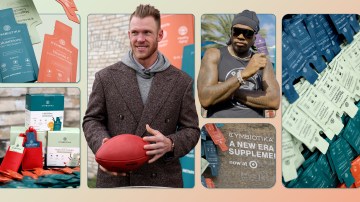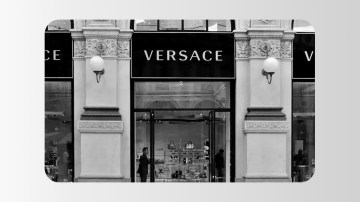This is an episode of the Glossy Fashion Podcast, which features candid conversations about how today’s trends are shaping the future of the fashion industry. More from the series →
Subscribe: Apple Podcasts • Spotify
Nine months into her role as CMO of DSW, Sarah Crockett is making some changes.
Crockett, who has led marketing for companies including Dickies and Burton, has been tasked with driving a brand refresh: “What the leadership team was looking for and what was needed [when I was hired] was some level of brand amplification and brand relevance,” Crockett said on the latest Glossy Podcast.
While working to meet these demands, Crockett has leaned into DSW’s existing strengths, including its large store footprint and loyal customers, she said. She’s also studied the footwear landscape to pinpoint DSW’s unique opportunities.
“This is going to be an evolution, not a revolution,” she said. “’We’re asking, ‘Where could DSW uniquely fulfill something for the consumer, and what does that require us to sharpen up within our own personality and within our own brand?’”
Other details from Crockett’s rebranding strategy are spelled out in this week’s episode. Additional highlights from the conversation, below, have been lightly edited for clarity.
The benefit of stores
“We have about 500 stores. I see them as a strength, absolutely, for the adjacency to our customers — the average best customer lives within eight miles of a DSW, and we see it from a marketing perspective as a great billboard. I’ve worked at organizations that didn’t have such a robust retail footprint, and you always saw that in the awareness numbers when compared to other retailers that do have a larger footprint. So the value of a store gives you so many unique benefits, from a brand perspective and, probably most importantly, from a customer relationship perspective.”
The subtle rebrand
“[The brand] is an opportunity to do a couple of different things. First, to understand what our unique strengths are and who makes up DSW, at its core. We definitely don’t want this to become one of those examples of a rebranding exercise where you kind of throw everything out and just focus on the future. We’ve seen a lot of disruption come as a result of that — insert the case study of Tropicana or Gap, right? We’ve all learned from those things. I think this is an opportunity to know what unique strengths of DSW [should] carry forward while also understanding how the consumer landscape has evolved since the last time we did this work, which was quite a bit ago. Certainly, there have been some changes since then — it was pre-pandemic, and we know the pandemic accelerated so many customer shifts. And then [it’s a time to look at] competitors — we’re looking at the marketplace and understanding: What is the customer being served by within our category today? All of those inputs together lead us to a gap analysis to say, ‘Where could DSW uniquely fulfill something for the consumer, and what does that require us to sharpen up within our own personality and within our own brand?’ So, this is going to be an evolution, not a revolution, when it comes to who we are as a brand. But what I do hope the consumer realizes over time is that — three months down the line, six months down the line, a year down the line — they can look back and be like, ‘Wow, DSW — I kind of like what they’re doing nowadays.’ They won’t know exactly what it is. They won’t know, ‘Oh, they’re using a different font,’ or, ‘Their stores changed in this way.’ But the collective sentiment of the brand starts to continuously move in the right direction, and that’s ultimately what you can expect to see.”
2025 challenges
“I don’t need to unpack all of the different news headlines that cross our desks about 20 times a day to say that it’s certainly a bit messy out there right now.… I think we’re certainly seeing 2025 as a year — just like many of them have been in recent times — where we’ve got to stay close to the market, stay close to the consumer and be very agile to understand where and when we have an opportunity to connect with the consumer.”




